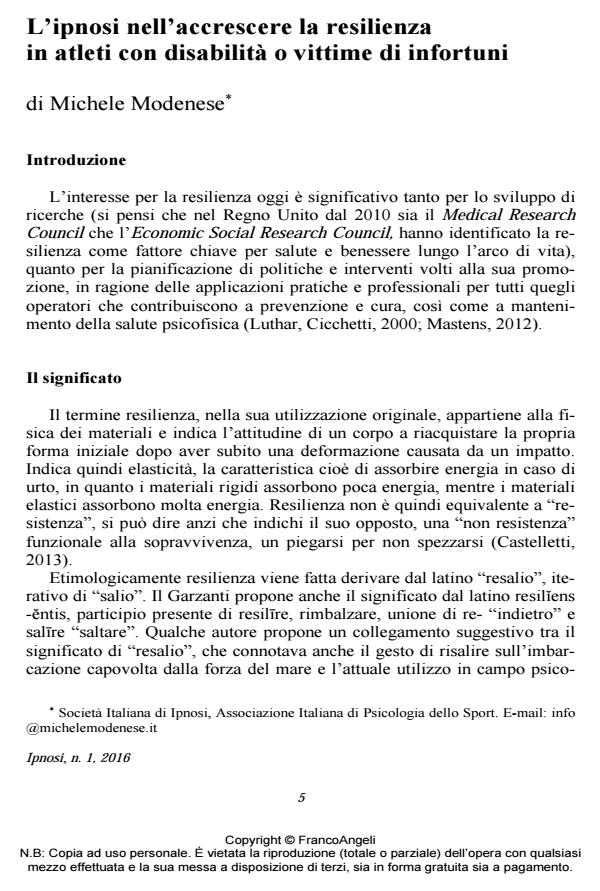L’ipnosi nell’accrescere la resilienza in atleti con disabilità o vittime di infortuni
Titolo Rivista IPNOSI
Autori/Curatori
Anno di pubblicazione 2016 Fascicolo 2016/1
Lingua Italiano Numero pagine 9 P. 5-13 Dimensione file 173 KB
DOI 10.3280/IPN2016-001001
Il DOI è il codice a barre della proprietà intellettuale: per saperne di più
clicca qui
Qui sotto puoi vedere in anteprima la prima pagina di questo articolo.
Se questo articolo ti interessa, lo puoi acquistare (e scaricare in formato pdf) seguendo le facili indicazioni per acquistare il download credit. Acquista Download Credits per scaricare questo Articolo in formato PDF

FrancoAngeli è membro della Publishers International Linking Association, Inc (PILA)associazione indipendente e non profit per facilitare (attraverso i servizi tecnologici implementati da CrossRef.org) l’accesso degli studiosi ai contenuti digitali nelle pubblicazioni professionali e scientifiche
The author presents a brief overview of the concept of resilience, a term borrowed from physics of materials and only recently investigated by psychology. Resilience in psychology and in particular in sport psychology will be underlined the fundamental elements, the result of a convergence of research and studies, which can be recovered and used to help with the application of hypnotic techniques. Then three situations will be presented by field work, two accident victims with athletes and a case of disabled athlete, in three different sports.
Parole chiave:Ipnosi, psicologia dello sport, resilienza, infortuni, disabilità.
, L’ipnosi nell’accrescere la resilienza in atleti con disabilità o vittime di infortuni in "IPNOSI" 1/2016, pp 5-13, DOI: 10.3280/IPN2016-001001